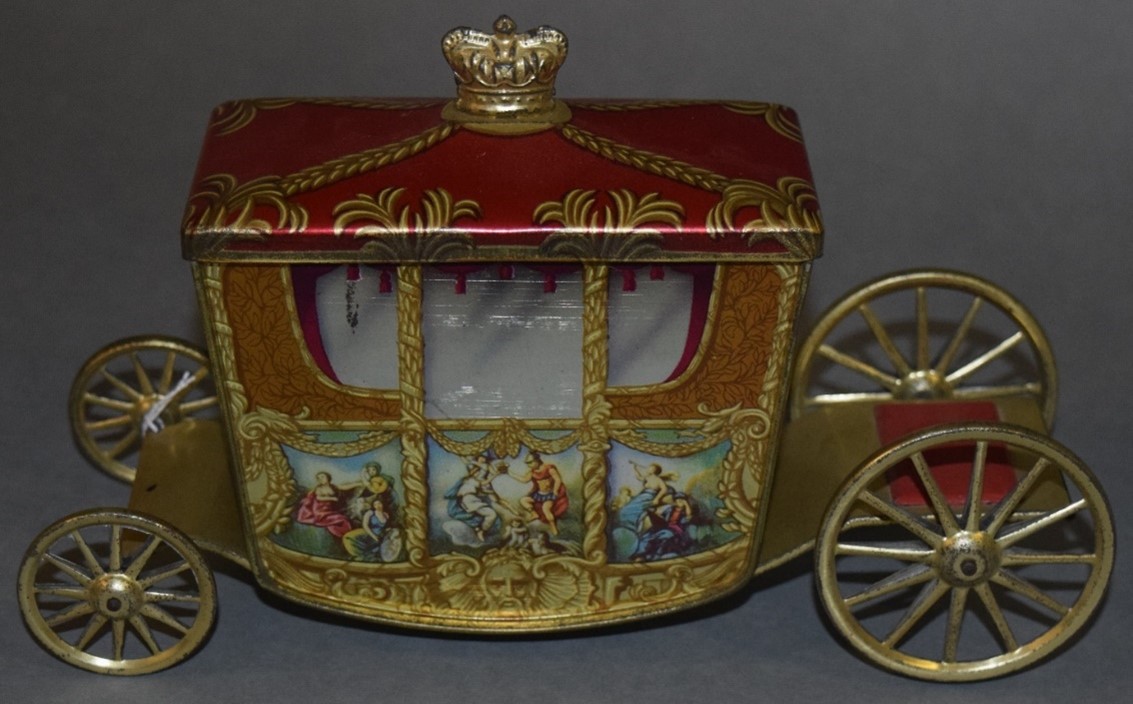The HAT team were delighted to be able to help archive client, pladis, celebrate the Coronation of King Charles III by curating a ‘Royal Connections’ display at their office in Chiswick Business Park, Link on 3 May.
pladis is one of the world's leading snacking companies and home to much loved brands including McVitie's, Godiva, Carr's and Ülker. pladis also owns regional brands Jacob's, Go Ahead, Flipz, BN, Verkade and many more.
The exhibition formed part of a wider programme which included a 'Coronation Big Lunch' and biscuit decorating session.
The pladis collection at HAT includes many fine examples of commemorative biscuit tins produced for royal occasions over the years, including Jacob's and McVitie's.
The exhibition also celebrated McVitie’s proud tradition of supplying royal wedding, Christening and anniversary cakes which began in 1893 with the marriage of the Duke of York and Princess Mary of Teck (later George V and Queen Mary).
In addition to commemorative biscuit tins, the display featured other royal related gems from the archive including a photograph album of Prince Charles’s visit to pladis' Harlesden factory in November 1978, company newsletters containing articles on various royal visits, letters from the Royal Household and a presentation cake box designed for a piece of the Rich Tea Chocolate Biscuit Groom’s Cake created by pladis for Prince William’s wedding in 2011. Also on display were samples of the intricate floral sugar work created for The Queen's Platinum Jubilee celebration cake in 2022, titled The Tree of Life, and inspired by The Queen's Green Canopy project.
The display in the office’s Heritage Hub took pladis staff on a trip through time from the 1911 Coronation to the present day with the inclusion of the most recent commemorative McVitie’s special edition biscuit selection designed for the current Coronation.
pladis team members were particularly taken by the W. & R. Jacob’s 1937 ‘Coronation Coach’ novelty which replicates in miniature the iconic Gold State Coach. The moveable tin was described at the time as ‘A fascinating enamelled model containing a splendid selection of mixed biscuits’.

Eve Read
Archive Collections Manager